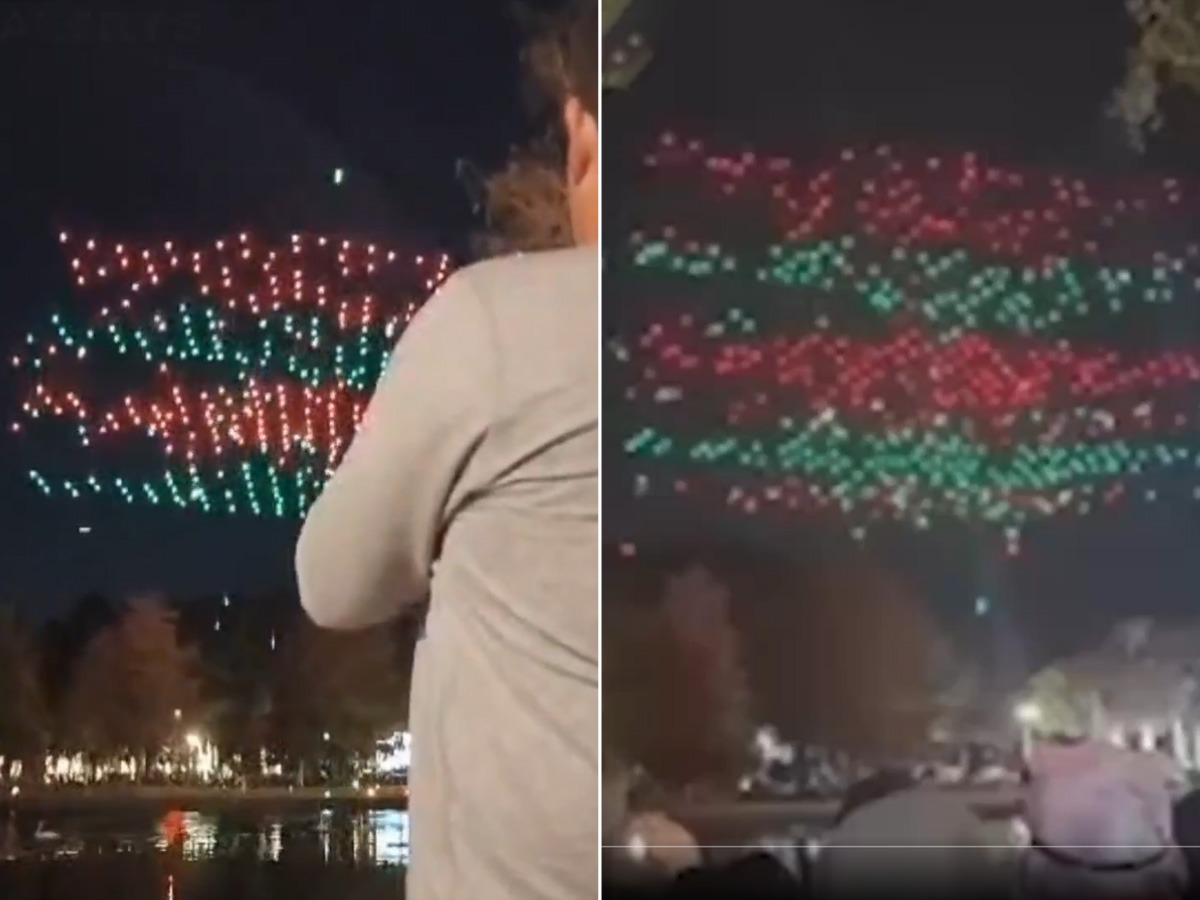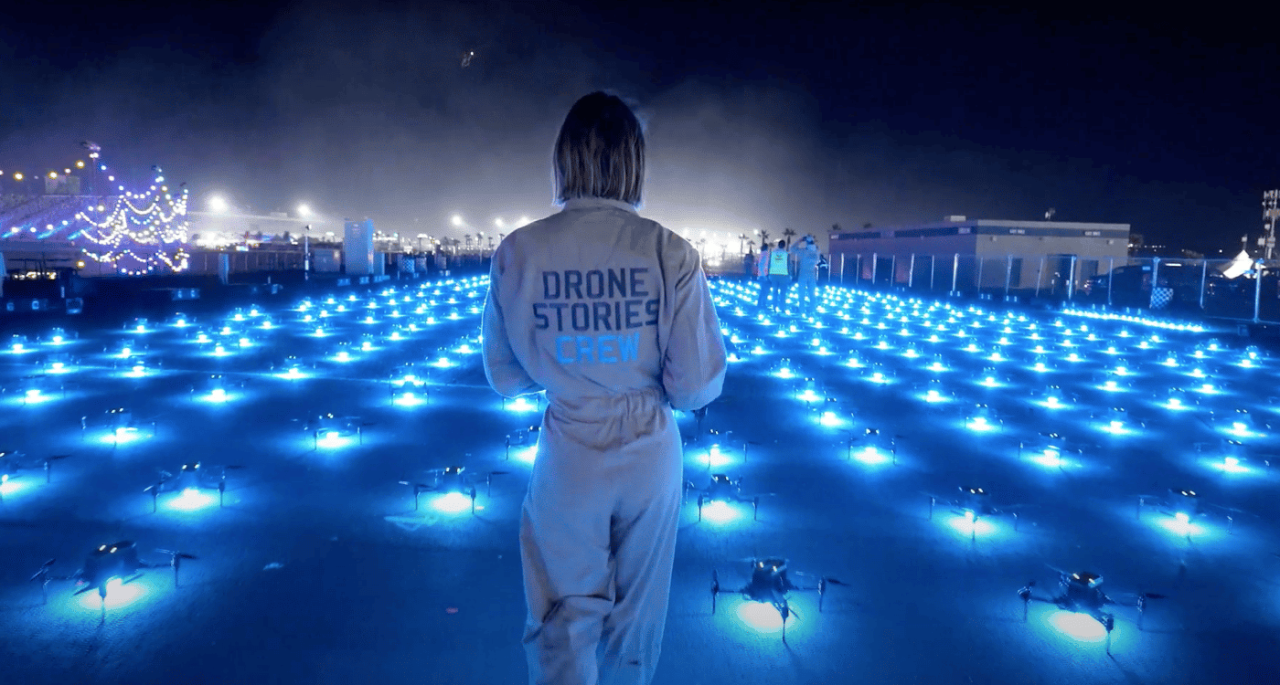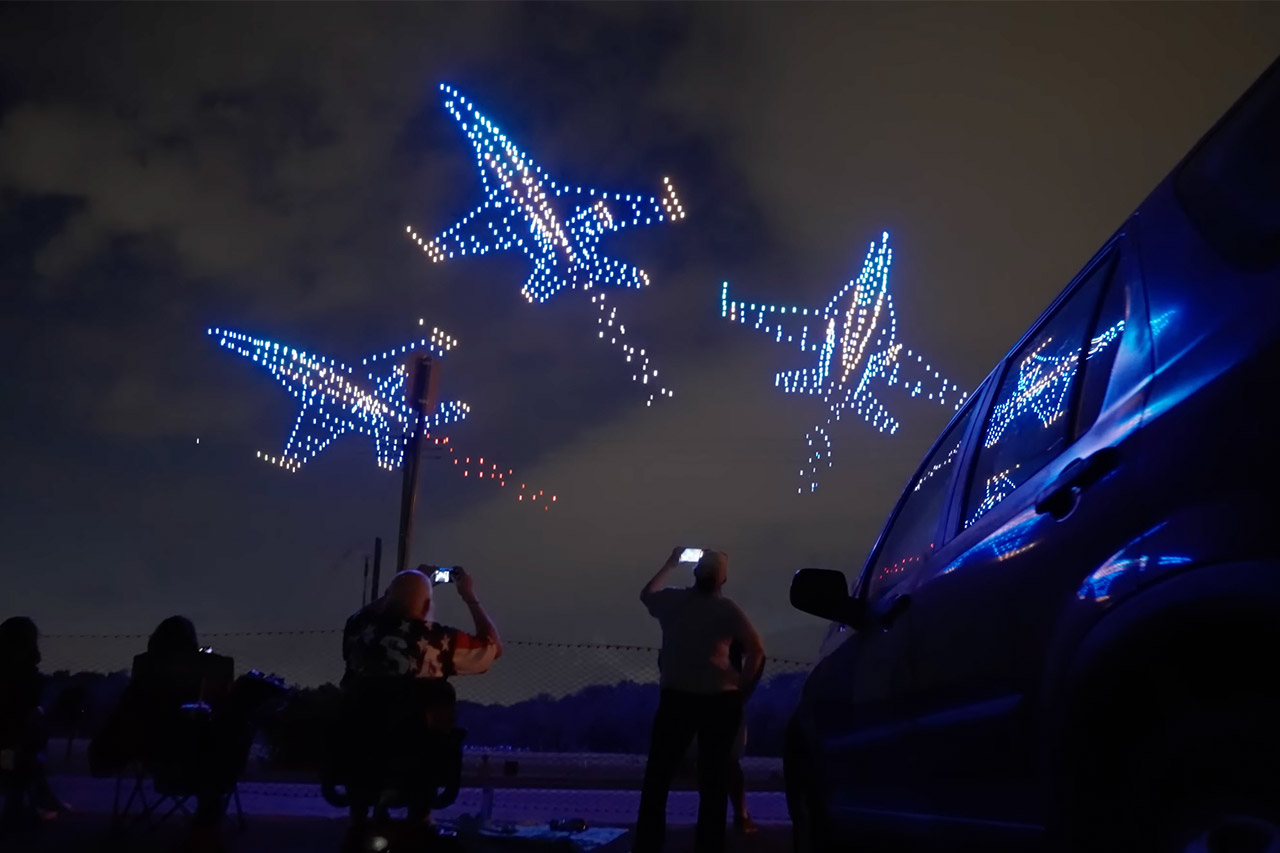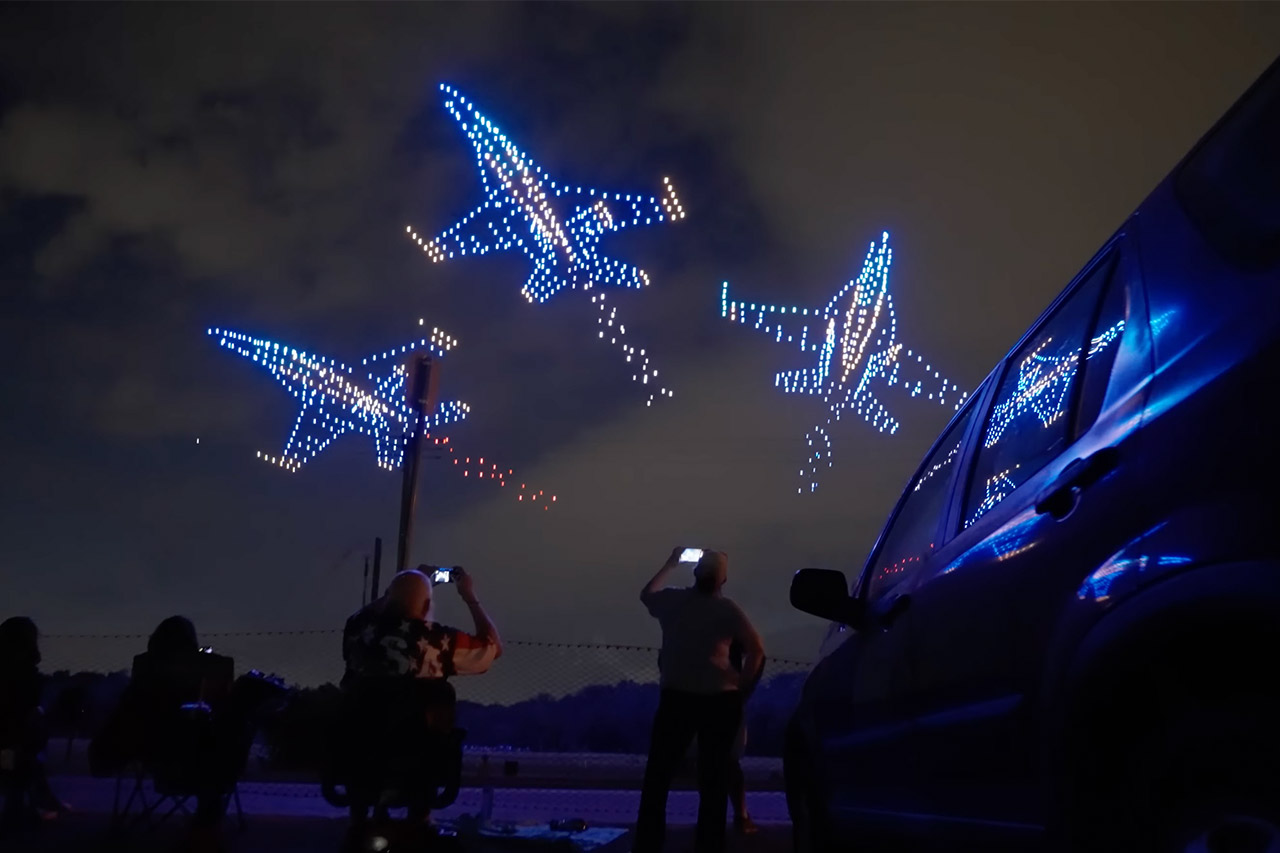Florida Drone Show: Imagine breathtaking aerial displays illuminating Florida’s stunning landscapes. This guide delves into the captivating world of Florida drone shows, exploring the regulations, popular locations, diverse show types, economic impact, safety protocols, and technological advancements shaping this exciting industry. From the meticulous permit processes to the awe-inspiring choreography, we unravel the intricacies of bringing these spectacular events to life.
Florida drone shows offer spectacular nighttime entertainment, a far cry from the traditional holiday spectacle. However, the spirit of wonder is similar; if you’re looking for a different kind of tracking this Christmas, you might check the norad santa tracker phone number for updates. But for a dazzling display of light and technology, Florida’s drone shows remain a top choice for family fun.
We’ll explore the unique challenges and opportunities presented by Florida’s diverse geography and vibrant tourism sector, highlighting both the regulatory framework and the creative innovations driving the growth of drone shows across the state. Prepare to be amazed by the scale, artistry, and technological prowess behind these unforgettable experiences.
Florida Drone Show Regulations and Permits
Organizing a drone show in Florida requires navigating a complex web of regulations and obtaining the necessary permits. This involves compliance with Federal Aviation Administration (FAA) rules, as well as specific local ordinances that vary across different cities and counties within the state. Understanding these requirements is crucial for a successful and legal drone show.
FAA Requirements for Drone Shows in Florida
The FAA mandates specific regulations for all drone operations, including drone shows. These include registration of the drones, adherence to weight limits, maintaining visual line of sight (unless operating under a Part 107 waiver), and flying within the specified airspace restrictions. Operators must be properly certified and adhere to all safety guidelines. Failure to comply can result in significant penalties.
Permit Application Process in Florida Cities
The permit application process varies significantly depending on the chosen location in Florida. Generally, applications are submitted to the local city or county government responsible for managing airspace and special events. Applicants need to provide detailed information about the show’s plan, including flight paths, drone specifications, insurance coverage, and emergency procedures. Processing times vary depending on the complexity of the application and the local authority’s workload.
Comparison of Permit Requirements Across Florida Counties
Permit requirements differ substantially across Florida’s diverse counties. Some counties may have stricter regulations regarding noise levels, flight times, and proximity to populated areas. Others might have streamlined processes and less stringent requirements. It’s essential to research the specific regulations of the intended county well in advance of the planned event.
Summary of Key Permit Requirements
| Permit Type | Application Fee | Processing Time | County/City Example |
|---|---|---|---|
| Special Event Permit (Drone Show) | $500 – $2000 (Variable) | 4-8 weeks | Miami-Dade County |
| Airspace Authorization | $100 – $500 (Variable) | 2-6 weeks | Orlando |
| Noise Permit | $100 – $300 (Variable) | 1-4 weeks | Tampa |
| Public Safety Permit | $200 – $1000 (Variable) | 2-6 weeks | Jacksonville |
Popular Florida Drone Show Locations
Several locations in Florida offer exceptional settings for drone shows, combining stunning backdrops with suitable airspace and accessibility. The selection depends on the show’s theme, audience size, and logistical requirements.
- Cocoa Beach Pier: A beachfront location offering breathtaking ocean views and ample space for spectators. The pier’s structure provides a unique visual element for the show, but wind conditions need careful consideration.
- Everglades National Park (Designated Areas): The vast expanse of the Everglades provides a dramatic, natural setting. However, permits and coordination with park authorities are crucial, and weather conditions can be unpredictable.
- Walt Disney World Resort (Specific Locations): While requiring extensive coordination and permits, Disney World’s controlled environment and established infrastructure offer a high-capacity venue with excellent spectator facilities. However, the costs and logistical complexities are significant.
- St. Augustine’s Historic District: The historic backdrop offers a unique visual contrast for the show, but airspace restrictions and the proximity of historical buildings require careful planning and permits.
- Amelia Island State Park: The park’s natural beauty and open spaces provide a picturesque setting. However, wind and weather conditions need to be carefully assessed, and permits are required.
Types of Drone Shows in Florida

Drone shows in Florida exhibit a remarkable diversity, catering to various interests and occasions. From themed spectacles to corporate events, the creativity and technical sophistication are constantly evolving.
Examples of Drone Show Types
Florida hosts diverse drone shows, ranging from patriotic displays during national holidays to elaborate themed shows celebrating local events or corporate milestones. These shows often incorporate sophisticated choreography, music synchronization, and storytelling elements to create immersive experiences for the audience. Technically, they vary in the number of drones used, the complexity of flight patterns, and the software employed for control and programming.
Comparison of Technical Aspects, Florida drone show

The technical requirements for different types of drone shows vary considerably. Themed shows may require more intricate choreography and a larger number of drones, while corporate events may focus on branding and message delivery, potentially using fewer drones but more sophisticated lighting and effects. Software used also differs, with some shows using advanced autonomous systems for complex maneuvers, while others may rely on manual control for simpler displays.
Summary of Drone Show Types
| Show Type | Target Audience | Typical Cost |
|---|---|---|
| Themed Show (e.g., Holiday) | Families, Tourists | $10,000 – $50,000+ |
| Corporate Event | Business Professionals, Clients | $5,000 – $30,000+ |
| Festival/Concert | General Public | $15,000 – $75,000+ |
| Private Event | Private Clients | $3,000 – $20,000+ |
Economic Impact of Florida Drone Shows
Drone shows contribute significantly to Florida’s economy, particularly its tourism sector. They attract visitors, stimulate local spending, and create job opportunities.
Economic Benefits for Florida’s Tourism Industry
Drone shows serve as unique tourist attractions, drawing visitors from across the state and beyond. This influx of tourists boosts local businesses, including hotels, restaurants, and retail shops. The shows also enhance Florida’s image as a destination for innovative and exciting entertainment, further promoting tourism.
Job Creation and Local Spending
Drone shows create direct employment opportunities for drone pilots, technicians, event organizers, and support staff. Indirectly, they support related industries such as hospitality, transportation, and entertainment. The increased tourist spending generated by these events contributes significantly to local economies.
Direct and Indirect Economic Impacts
- Direct: Increased tourism revenue, direct spending by show attendees, wages for show personnel.
- Indirect: Increased revenue for local businesses (hotels, restaurants), job creation in supporting industries, enhanced local reputation and tourism branding.
Safety and Security Considerations for Florida Drone Shows
Ensuring the safety and security of a drone show is paramount. This requires meticulous planning, adherence to strict protocols, and contingency planning for unforeseen circumstances.
Florida drone shows are becoming increasingly popular, offering spectacular nighttime displays. The technology involved is quite advanced, similar to the high-resolution capabilities needed for something like the cobequid pass camera , which provides stunning imagery. This same level of precision and control is essential for creating the intricate patterns and formations seen in these Florida drone performances, ensuring a truly memorable experience for viewers.
Safety Protocols and Emergency Procedures

Comprehensive safety protocols are essential, including pre-flight checks, redundant systems, and trained personnel to handle emergencies. A detailed emergency response plan should be in place, covering scenarios such as drone malfunctions, weather disruptions, and unexpected events. This plan needs to Artikel communication procedures, evacuation strategies, and first aid protocols.
Airspace Management and Coordination
Careful airspace management is crucial to avoid collisions with other aircraft. Coordination with air traffic control (ATC) is mandatory, and the show’s organizers must obtain necessary airspace authorizations. A designated airspace safety observer is usually required to monitor the airspace and alert the operators of any potential hazards.
Risk Mitigation Plan
- Weather Monitoring: Continuous monitoring of weather conditions and cancellation procedures for adverse weather.
- Redundant Systems: Employing backup drones and control systems to mitigate technical failures.
- Emergency Communication: Establishing clear communication channels between operators, ground crew, and emergency services.
- Spectator Safety: Designated viewing areas, crowd control measures, and clear communication about safety procedures.
Technological Advancements in Florida Drone Shows
Technological advancements in drone technology continue to revolutionize the quality and scope of drone shows in Florida. These advancements enhance show design, audience experience, and operational efficiency.
Latest Technological Advancements
Recent advancements include improved drone autonomy, enabling more complex and dynamic flight patterns. Enhanced lighting systems provide brighter and more colorful displays, while sophisticated software allows for seamless synchronization of drones with music and other visual elements. New drone models offer increased flight times, improved stability, and greater payload capacity, enabling more ambitious show designs.
Innovative Drone Show Designs
Innovative designs utilize GPS-based precision flight control, enabling drones to create intricate three-dimensional formations and patterns. Some shows integrate augmented reality (AR) elements, enhancing the audience experience by overlaying digital content onto the live drone performance. The use of LED lighting and other special effects further expands the creative possibilities.
Comparison of Drone Models
| Drone Model | Payload Capacity | Flight Time | Key Features |
|---|---|---|---|
| DJI Agras T20 | 20kg | 28 minutes | High Payload, Precision Spraying |
| Intel Shooting Star | N/A | Variable | Lightweight, High-Density Formations |
| EHang 216 | 2 Passengers | 25 minutes | Autonomous Flight, Passenger Drone |
Florida drone shows represent a compelling blend of technology, artistry, and economic opportunity. From navigating complex regulations to harnessing cutting-edge drone technology, the success of these events hinges on careful planning, meticulous execution, and a commitment to safety. As technology continues to evolve, we can anticipate even more spectacular and innovative drone shows illuminating Florida’s skies, further enriching its tourism landscape and contributing to its economic vitality.
The future of Florida drone shows is bright, promising even more breathtaking displays and unforgettable experiences for years to come.
Q&A
What types of insurance are required for a Florida drone show?
Liability insurance is crucial, covering potential damages or injuries. Specific requirements vary depending on the show’s scale and location; consult with an insurance professional.
How long does it take to obtain a permit for a drone show in Florida?
Processing times vary significantly based on the location and complexity of the application. Allow ample time – typically several weeks to months – to ensure a timely approval.
Are there restrictions on the types of drones that can be used?
Yes, FAA regulations dictate drone specifications, including weight, capabilities, and registration. Additionally, local ordinances may impose further restrictions.
Florida drone shows are increasingly popular, offering spectacular nighttime displays. However, the industry isn’t without its risks; a recent incident highlighted the potential dangers, as detailed in this report on a florida drone accident. Understanding these risks is crucial for ensuring the continued safe and successful operation of Florida drone shows, protecting both the public and the industry’s reputation.
What is the typical cost range for a Florida drone show?
Costs vary widely depending on factors such as the number of drones, show duration, complexity of choreography, and required permits. Expect a significant investment for larger, more elaborate shows.
